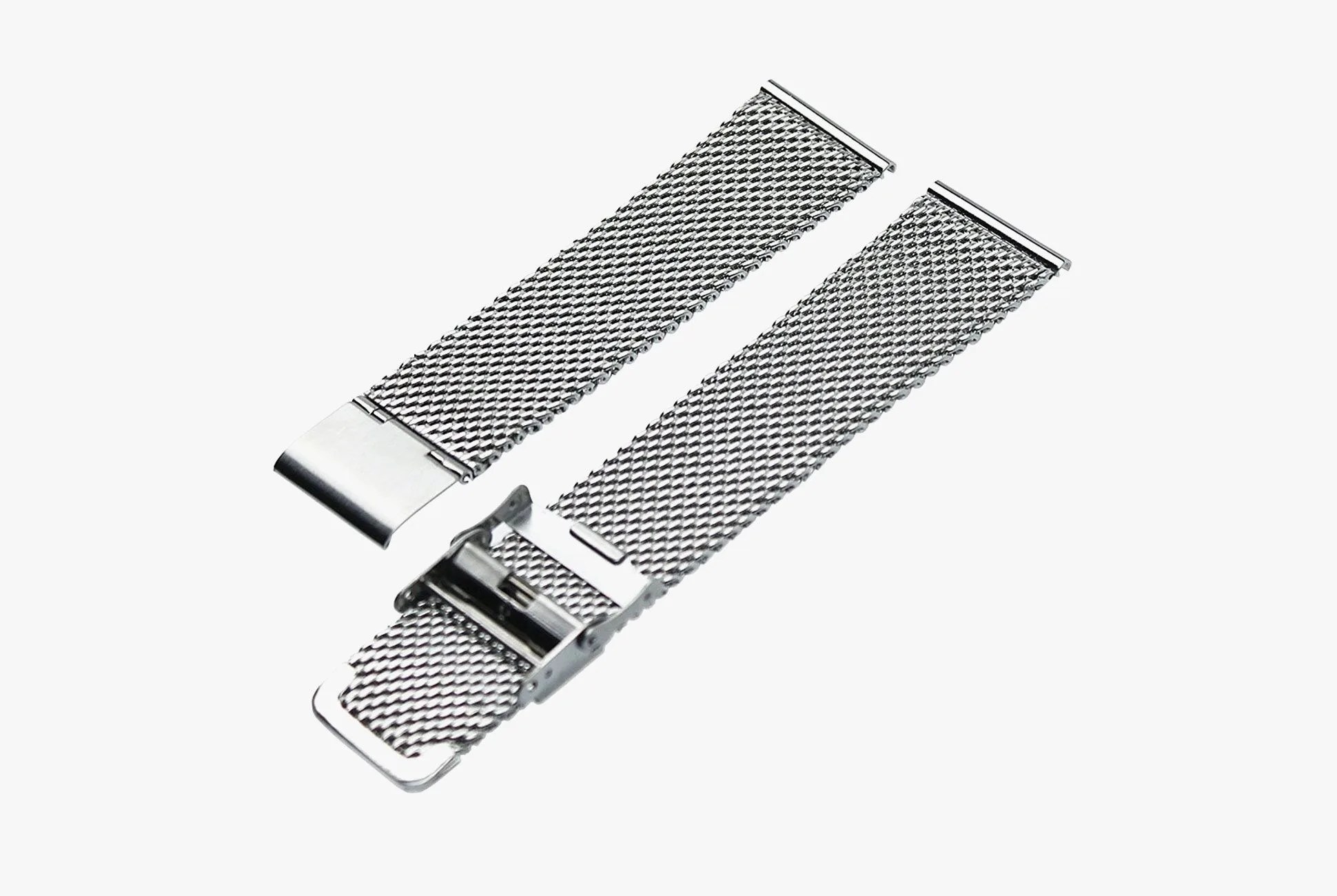A couple months back the buckle popped off the cheap faux alligator strap that came on my eBay-purchased Seiko 5. Normally I could just swap in one of the many NATO straps I keep on my bedside table. Thing is, my Seiko comes from an era when watchmakers loved to design cases that seamlessly integrated with the bracelet by shrouding the spring bar and lugs. It looks cool if you have the original bracelet (I did not) or a two-piece leather strap (I did not) but annoying if your nylon NATOs don’t fit through the narrow space (mine didn’t). Buying a two-piece leather strap makes sense, but if you’re attaching it to a watch you bought for $25 seems a bit silly when all your best options cost at least twice as much.
Then I remembered a discussion my editor and I had recently about our mutual obsession with Seiko’s guilloche “Cocktail Time,” which was intensified by photos we had seen of one affixed to a mesh steel “Milanese” strap. The watch itself is brilliant, but somehow the strap managed to steal the show, melding perfect with the timepiece but still standing out on the wrist. By comparison, the watch’s standard black leather strap felt distracting. “Fuck it, let’s see how much mesh straps cost on Amazon,” I told myself.
$10? Add to cart.
As the name suggests, the Milanese mesh strap hails from Italy’s second largest city. It was first created there in the 19th century, but it was perfected in Germany in the early 20th century by brands like Staib and Vollmer, and proliferated around the same time that wristwatches began to usurp pocket watches as the most fashionable way to tell time. Mesh straps were common on both dress watches and tool watches from the ’30s and ’40s, and had a resurgence in the ’60s and ’70s in a slightly chunkier iteration, known as “shark mesh” thanks to Omega’s unique Ploprof 600 diver. But recently the style has come back as an alternative to both leather straps and linked bracelets. Some attribute this resurrection to stylish brands like Skagen and Union Wares, and even the Apple Watch (of all things) has been called out as a proliferator of the style.
When I finally got mine, its comeback made sense to me as more than just an off-beat option. It’s something of a hybrid of a leather strap and a steel link bracelet, offering the benefits of both. It’s certainly as durable as a metal bracelet and has the same sharp, steely look that dresses both up and down, but it can be adjusted by sliding the clasp; compare that to the painful, tedious and truly inconvenient process of removing or adding bracelet links. That means when your wrist inevitably swells up in the hot summer months, giving it some breathing room — already bolstered by the mesh, I might add — takes seconds.
And that’s to say nothing of the fact that this $10 web of stainless steel made my $25 watch look like a million bucks. The association with high-dollar classic watches certainly helps, as does the use by modern design greats (hey, some people like how the Apple Watch looks). Changing up your watch strap is by and large one of the cheapest and easiest ways to breathe life into any of your timepieces, and though you can find some high-end interpretations for over $100 (like this Staib, for instance), steel mesh is, on the whole, one of your cheapest options — but it makes the biggest impression.
